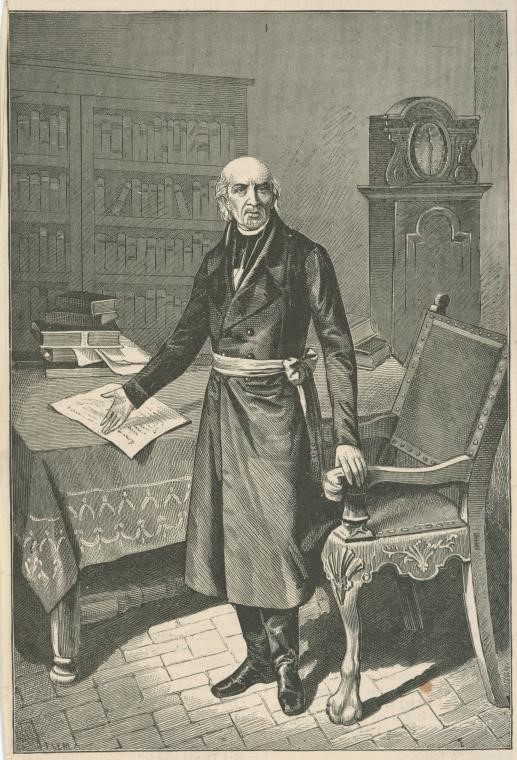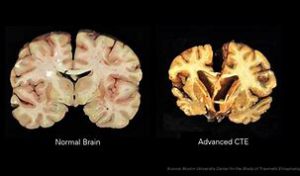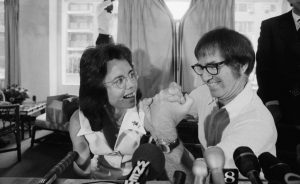Every 16th of September, there is a great celebration that occurs in Mexico. It is the celebration of independence, also known as “El Grito de Dolores” or “Cry of Dolores.” At twelve in the morning, yells of thousands can be heard throughout Mexico, expressing their love for the country and made in memory of the yell made by Miguel Hidalgo y Costilla to alert the church that the fight for Mexican independence had begun. Although well known, some people may not know of the work and sacrifice that went into gaining Mexico’s independence from Spain. Most notably, this revolution was due to an individual named Miguel Hidalgo. He was a Mexican priest, and history has recorded his meaningful involvement in Mexico’s fight for independence.1
During the time when the French Emperor Napoleon invaded Spain, the desire for independence and freedom was peaked in Mexico. But long before that, around the year 1773, there was a man by the name of Miguel Hidalgo y Costilla who obtained his bachelor’s degree from San Nicolás College and who became ordained a priest in 1778.2 As time past by, Hidalgo noticed how the Spanish would oppress the Mexican people, ultimately leading him to take a role that would impact Mexico’s future forever. Due to his charisma and outstanding personality, he was able to influence the Mexican lower classes to rise.

Miguel Hidalgo’s major involvement in the Mexican revolution was to motivate the lower class to rise up against the Spanish rule. Along with the help of Ignacio Allende and other revolutionaries, Hidalgo planned to revolt. However, early in September 1810, the revolutionary plan was exposed to the Spanish, along with who the revolutionaries were. Hidalgo had to think quick in order to find a way to inform the people that the revolution needed to begin earlier than when they had planned.3 They rang the church bells, and Hidalgo then gathered Mexicans together to hear him speak. He spoke about the consequences of being subjects of Spain, and to give a final push, he made the image of The Virgin of Guadalupe his banner for revolution. Most Mexicans were from the Catholic faith, so they viewed this revolution as a religious responsibility.
As time passed by, Hidalgo fought a number of battles against the Spanish, some with better outcomes than others. When the Spanish forces were reinforced, he headed north, which ultimately led to the Battle at Calderón Bridge.4 The battle ended terribly. The Spanish captured Hidalgo and his companions. He and the rest were taken to Chihuahua, Mexico, where they were put on trial. Miguel Hidalgo was found guilty, then shot and decapitated on July 30, 1811. Though Miguel Hidalgo was not around to see it, his death motivated Mexican troops to continue his cause of revolution. His actions had been necessary in order for the people of Mexico to come together and fight to gain its independence by 1821.


Today, the impact of Miguel Hidalgo is remembered every year with ” El Grito de Dolores,” often also referred to as ” El Grito de Independencia,” which translates to ” the cry of Dolores” and ” the cry of independence,” which is in remembrance of the day when Miguel rang the bells of his church and proclaimed the Mexican fight for independence. There is no doubt that Miguel Hidalgo will go down in history not just because he gave up his life fighting for revolution, but because he had the courage to fight when no one else did. He was able to gather a Mexican army to fight back and little did he know that his actions would be a pivot point in order to achieve Mexican independence. There are multiple statues of him throughout Mexico, but the most notable one is in San Miguel de Allende, Mexico. People walk past the statue every day and remember the great sacrifice that was made in order to have the Mexico that is established today.
- Christon I. Archer, Miguel Hidalgo y Costilla (1753–1811) (Detroit: Charles Scribner’s Sons, 2008), 687-689. ↵
- E. Del Hoyo, Miguel Hidalgo y Costilla (Detroit: La Vida del héroe, 2003), 820-821. ↵
- Marvin Alisky, Miguel Hidalgo Y Costilla (Scarecrow Press, 2007), 259-260. ↵
- Wil G. Pansters, Mexico (New York, Macmillan Reference USA, 2001,), 1447-1464. ↵



32 comments
Daniela Iniguez-Jaco
Great article! I am doing my own research on Miguel Hidalgo and you have said everything perfectly. On September 16 we had called my family in Mexico and we screamed with them on the phone because we honor that day. I love that you kept the Spanish translation in as well. El Grito de Dolores is such an important day for Mexicans and I wish Hidalgo got to see how much he changed Mexico’s freedom
Paula Salinas Gonzalez
I really liked this article. Miguel Hidalgo had the courage to stand up for his people and instigate a revolution when there was the need for one. Without him, Mexican independence might not have happened or wouldn’t have happened the same way. I think that it is a very important tradition to remember Miguel Hidalgo every year with El Grito de la Independencia.
Madelynn Vasquez
Being Mexican, reading stories like this make you feel proud for your people and being one of them as well. Reading that Hidalgo wasn’t able to see his efforts, is moving in and of itself, especially consider that he was a huge motivator for the lower class to be against the Spanish! Thank you for sharing his story and the history of this eventful day!
Carlos Serna
I enjoy reading this article. I am Mexican and since I was a child every 16th of September, we celebrate and see, on the TV, the President of Mexico giving El Grito De Dolores exactly at 12:00 a.m. I loved how you describe Miguel Hidalgo y Costilla as a symbol of liberty. I just think you missed that Miguel Hidalgo’s head was put in a cage and hang in the Alhondiga de Granaditas to cause terror through the people, but instead it cause valor in the Mexicans to die for liberty.
Alondra Lozano
Miguel Hidalgo was a really important person to the lower class people and helped gain the Mexican Independence. I really liked this article because my family and I go to Mexico to celebrate and give the ” Grito de Dolores.” He is remembered as a figure who fought for independence and died trying to make Mexico independent from the Spaniards. This was a really interesting article and I learned more about who Miguel Hidalgo was.
Sara Guerrero
Miguel Hidalgo and the “El Grito de Dolores” is an icon to mexican history and watching the president of Mexico recreate the Grito of Dolores every year is soomething i’ve always wondered about. Reading this article gave me more insight of its history and I learned that they got their independence from the Spanish and Hidalgo brought the mexican people together to defeat a powerful country.
Arsema Abera
I enjoyed reading this article, but whenever I read that the heroes that fought the war did not get to see the first of their hard work it is really sad. Thanks to this great man Miguel Hidalgo y Costilla he motivated his country to be free from the rule of the Spanish and lead an independent life and its great to hear that he is still honored and commerated till this day.
Zachary Kobs
Miguel Hidalgo y Costilla gave his life for what he believed in and that is the most heroic thing I believe someone can do. Sometimes no one wants to step up to the plate and stir up a change but Miguel did and he will be remembered by history for it. If he had not done what he had done Mexico would possibly not be the great country it is today.
David Castaneda Picon
Wow, I really loved this article, I always enjoy reading about the history of my country. Miguel Hidalgo y Costilla also known “El Padre de la Patria” was a great leader and did a great job commanding the Mexican revolution. Despite his tragic death, he managed to inspire Mexicans a Mexican troops to continue the movement of revolution. I believe that Miguel Hidalgo is a leader worthy of admiration.
Giselle Garcia
I liked what the article had to say about Miguel Hidalgo’s story. Hidalgo was a motivator for the lower class to rebel against the Spanish and he led battles fighting against them. Even though he was eventually captured and executed, his death inspired others to fight for Mexico’s independence and led Mexico to independence. Hidalgo is remembered as a figure who instigated the movement for independence, especially how the “El Grito de Dolores” celebrates his shouts that the fight has begun.